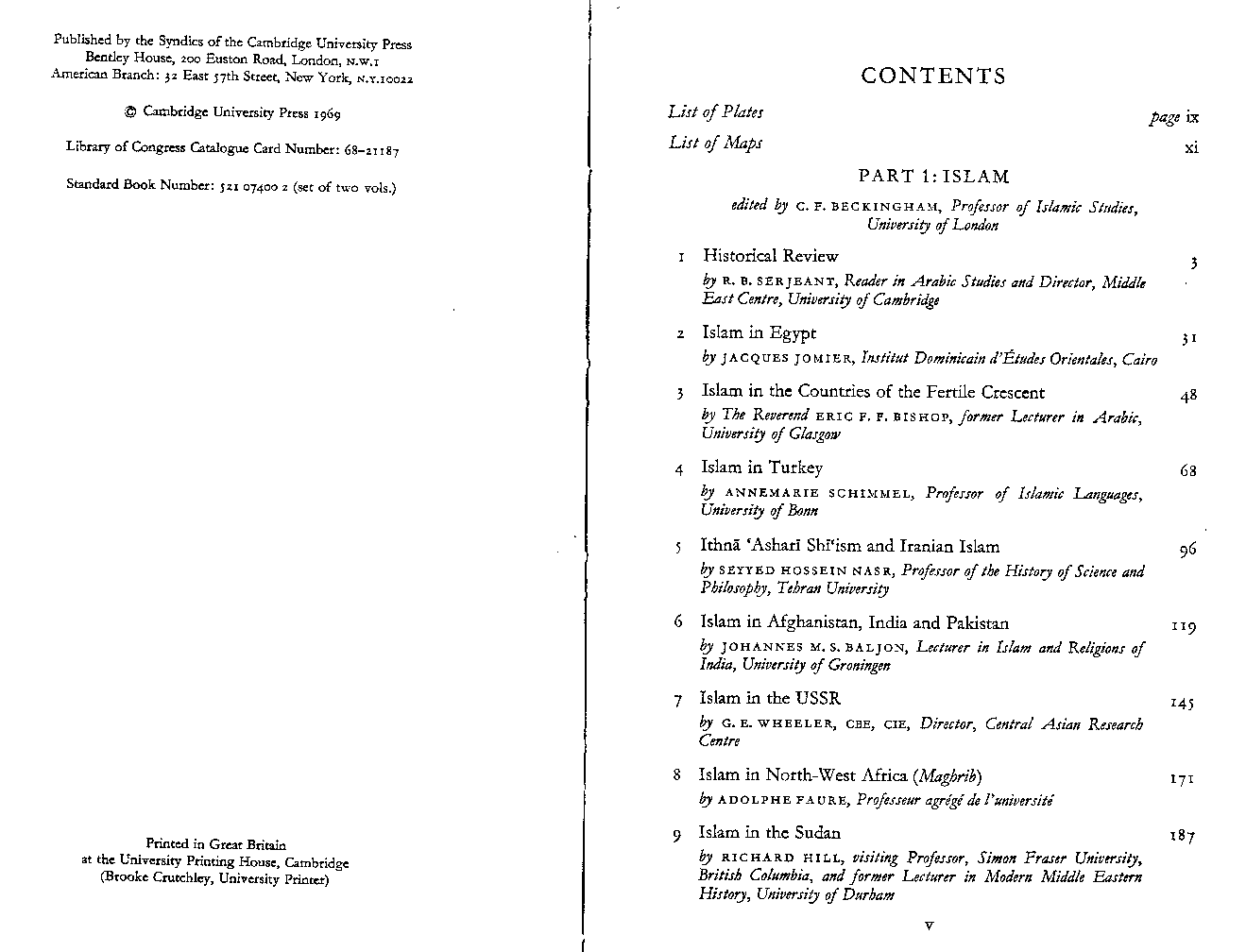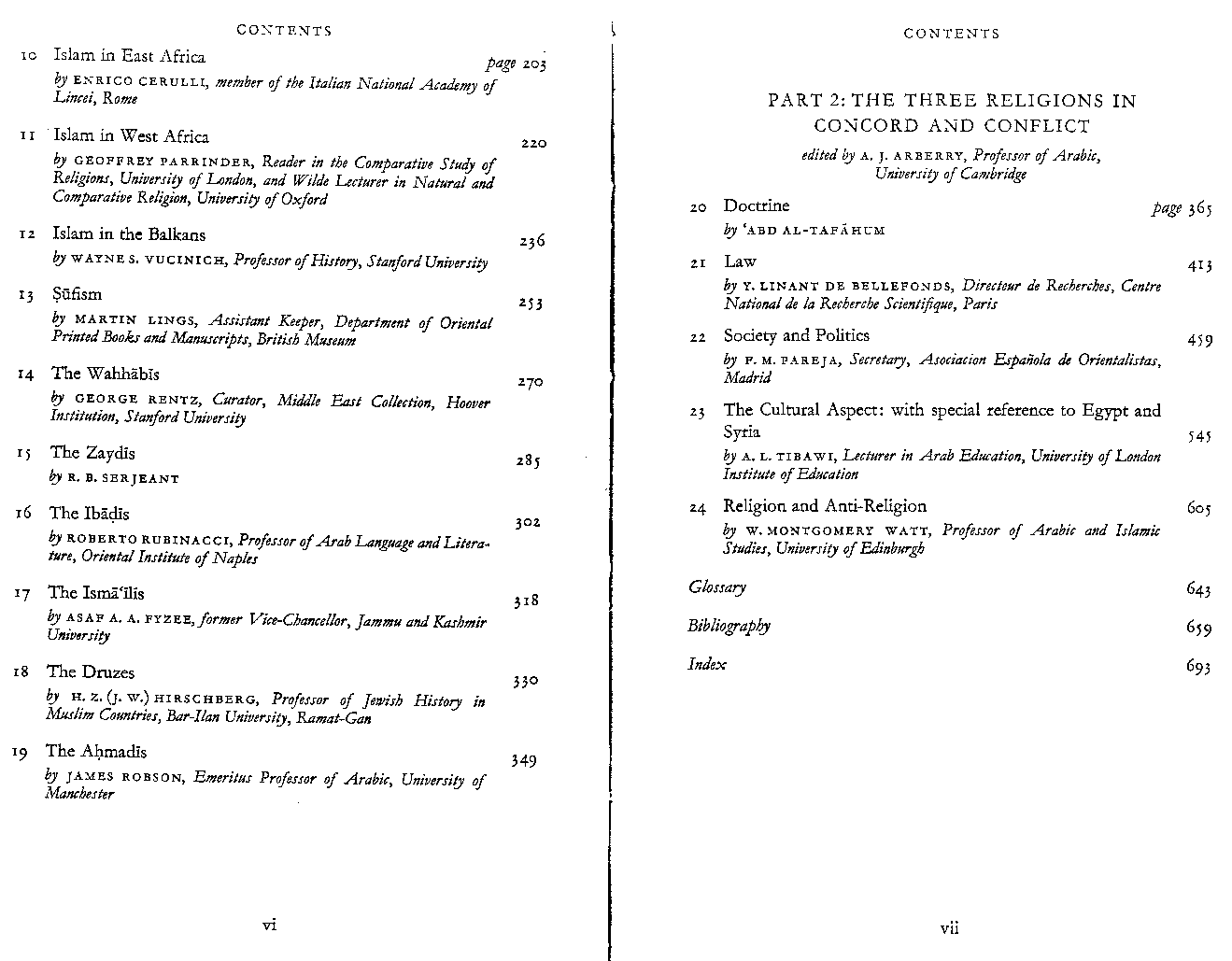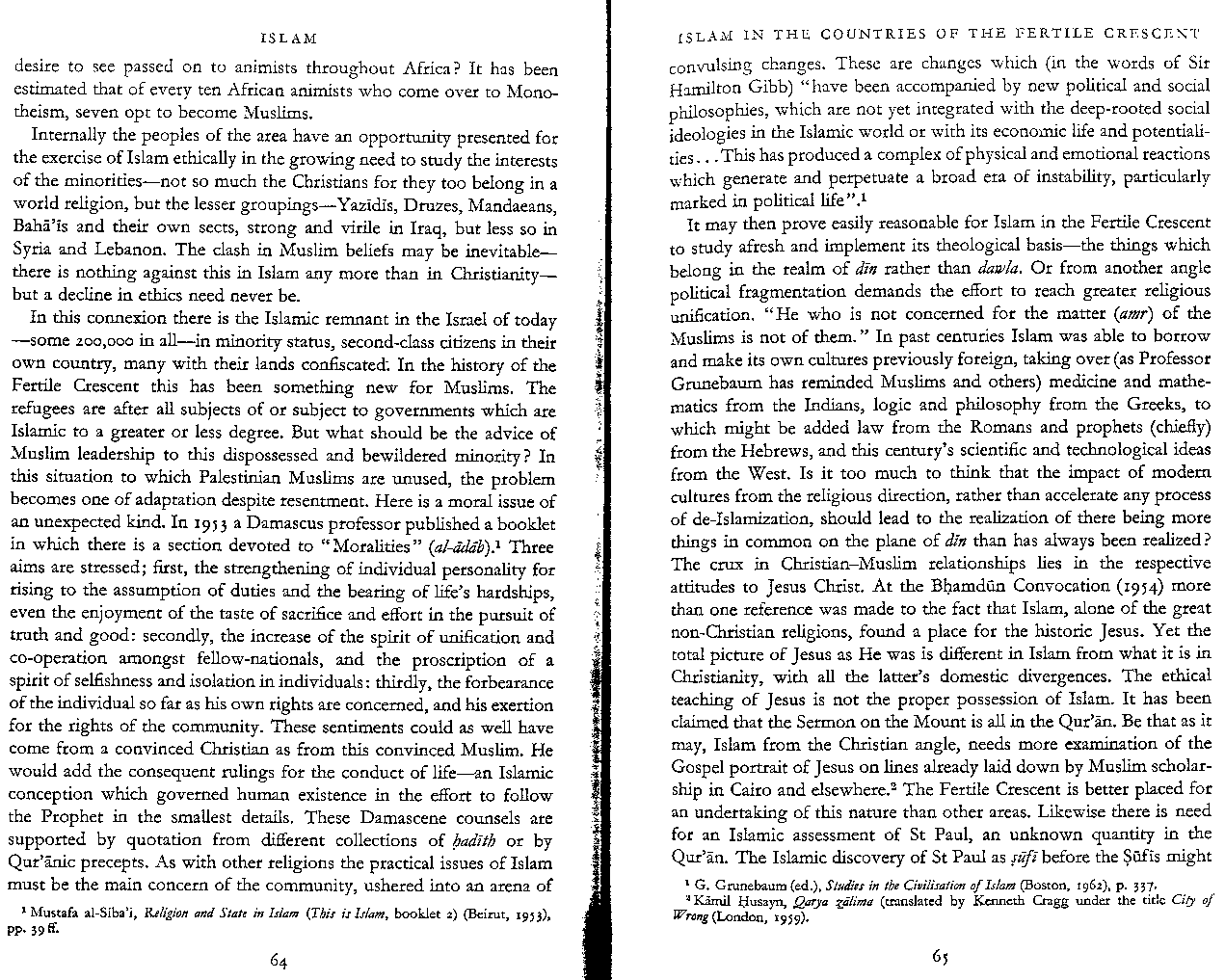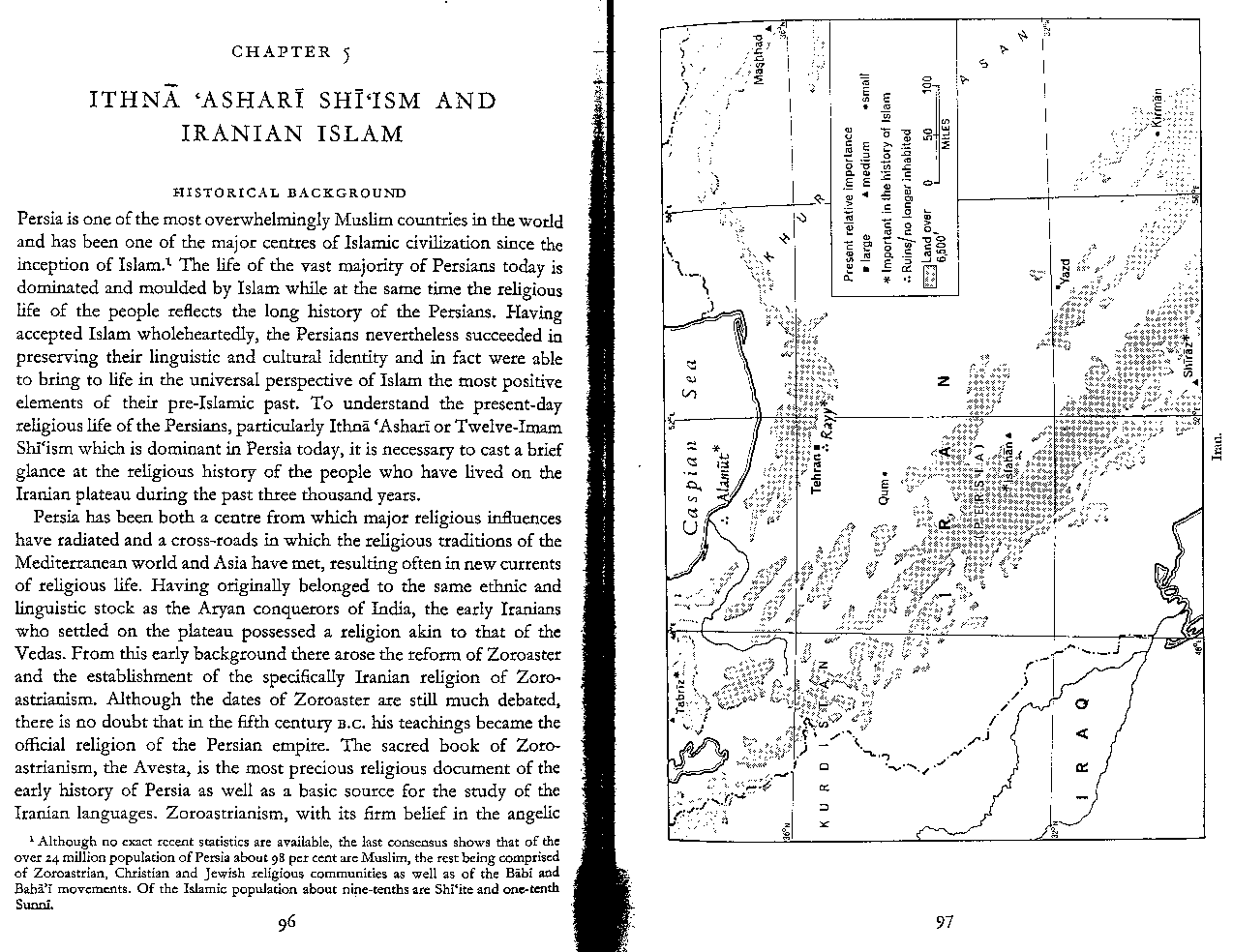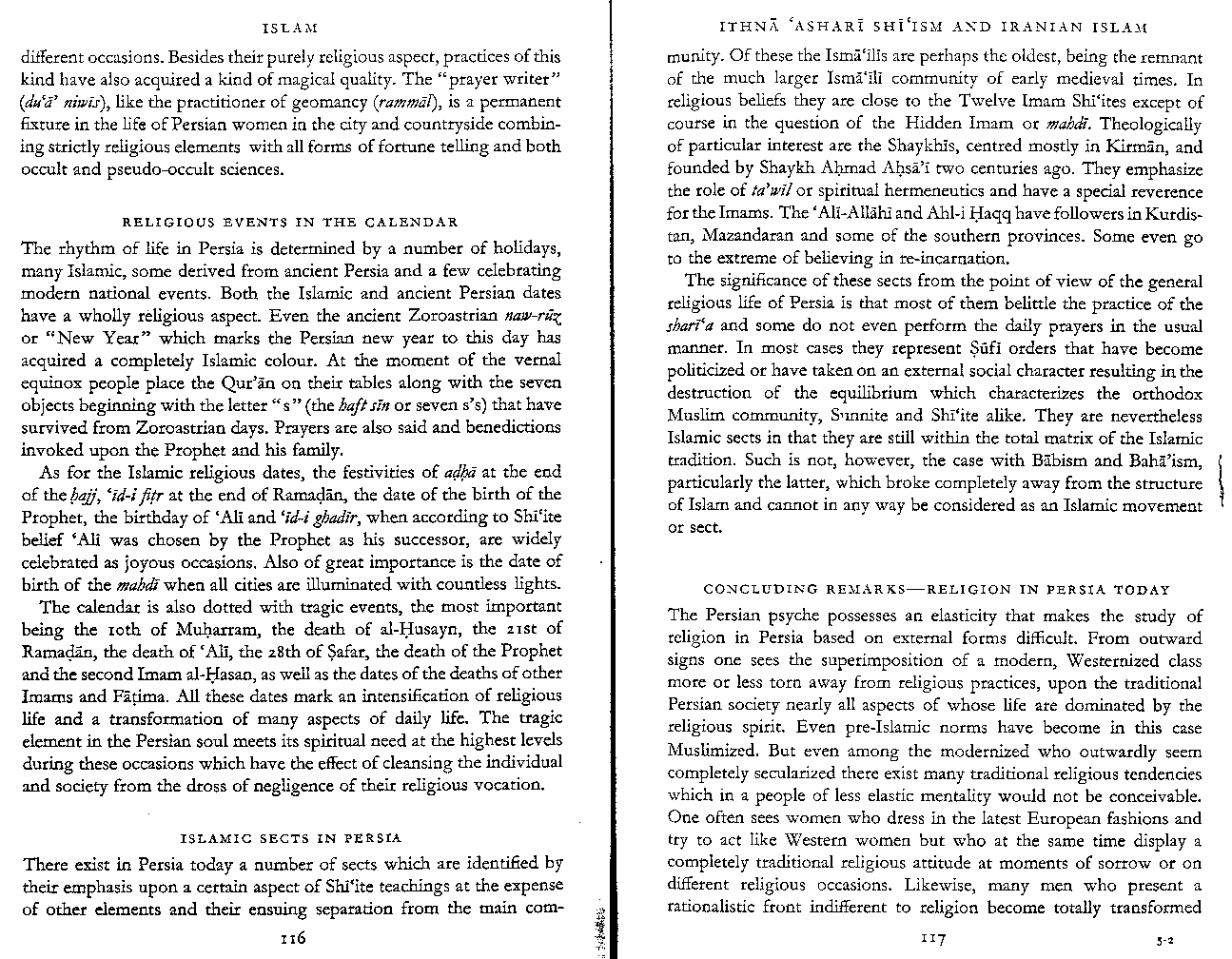
|
|
Abstract: Five mentions of the Babis, Bahá'ís, and Ahmadiyya. |
Religion in the Middle East:
Three Religions in Concord and Conflict: Volume 2, Islam
by Arthur J. Arberry
pages 64, 96, 117, 155, 633-634Cambridge: Cambridge University Press, 1969
1. Text
[page 64]Internally the peoples of the area have an opportunity presented for the exercise of Islam ethically in the growing need to study the interests of the minorities-not so much the Christians for they too belong in a world religion, but the lesser groupings - Yazidis, Druzes, Mandaeans, Bahá'ís and their own sects, strong and virile in Iraq, but less so in Syria and Lebanon. The clash in Muslim beliefs may be inevitable there is nothing against this in Islam any more than in Christianity but a decline in ethics need never be.
[page 96]
... Persia is one of the most overwhelmingly Muslim countries in the world and has been one of the major centres of Islamic civilization since the inception of Islam.1
-
1 Although no exact recent statistics are available, the last consensus shows that of the
over 24 million population of Persia about 98 per cent are Muslim, the rest being comprised
of Zoroastrian, Christian and Jewish religious communities as well as of the Babi and
Bahá'í movements. Of the Islamic population about nine-tenths are Shi'ite and one-tenth
Sunni.
[pages 116-117]
ISLAMIC SECTS IN PERSIA
There exist in Persia today a number of sects which are identified by their emphasis upon a certain aspect of Shi'ite teachings at the expense of other elements and their ensuing separation from the main community. Of these the Ismá'ílís are perhaps the oldest, being the remnant of the much larger Ismá'ílí community of early medieval times. In religious beliefs they are close to the Twelve Imam Shi'ites except of course in the question of the Hidden Imam or mahdí. Theologically of particular interest are the Shaykhís, centred mostly in Kirmán, and founded by Shaykh Ahmad Ahsá'í two centuries ago. They emphasize the role of ta'wil or spiritual hermeneutics and have a special reverence for the Imams. The 'Alí-Alláhí and Ahl-i Haqq have followers in Kurdistan, Mazandaran and some of the southern provinces. Some even go to the extreme of believing in re-incarnation.
The significance of these sects from the point of view of the general religious life of Persia is that most of them belittle the practice of the shari'a and some do not even perform the daily prayers in the usual manner. In most cases they represent Súfí orders that have become politicized or have taken on an external social character resulting in the destruction of the equilibrium which characterizes the orthodox Muslim community, Sunnite and Shí'ite alike. They are nevertheless Islamic sects in that they are still within the total matrix of the Islamic tradition. Such is not, however, the case with Babism and Bahá'ism, particularly the latter, which broke completely away from the structure of Islam and cannot in any way be considered as an Islamic movement or sect. ...
[page 155]
... The authority of this directorate extends to the whole Shi'i community of the USSR to which the president belongs. The vice-president acts as mufti of the Sunni communities of Transcaucasia. Smaller sects such as the Ismá'ilís, the Bahá'ís and the Yazidis have no officially recognized spiritual directorate. ...
[page 633]
... In the competition to supply the ideas for the renewal of the life of the Middle East, there are some entrants besides the world religions and Marxism, and these should be looked at briefly. So far no really new body of ideas specially relevant to the Middle East has appeared in Marxism, secularism or the great religions. On the fringe of Islam however, there have been new ideas, notably in Wahhabism, Ahmadiyya and Bahá'ísm. Wahhabism developed in central Arabia in the middle of the eighteenth century and is fundamentally a reassertion of traditional Islam. It is difficult to demonstrate that it is a response to the impact of Europe, and yet it is not unreasonable to look on it as somehow a result of the pressures of Europe on the Ottoman Empire as felt on the frontiers of that empire (as at Basra and Baghdad) and even beyond; one would expect that, as men felt their existing way of life to be threatened, they would turn to an older and "purer" form of their religion. In the course of time Wahhabism has had some influence in the great cities of Islam.
The response to the European impact is seen more clearly in the Ahmadiyya movement which began at Qadian in the Panjab (now in India) towards the end of the nineteenth century. While claiming to return to the past and to be the true Islam, it also has features which show it reacting to some aspects of the impact. Thus Mirza Ghulam Ahmad, the founder, claimed to be the "promised messiah" of the Christians, doubtless because he lived in a world which included European Christians, often in positions of superiority. He also copied Christian missionary methods to a great extent in the organization of his movement.
Bahá'ísm also shows a reaction to Europe, but in a different way. Whether in its origin reaction to pressures ultimately due to Europe is prominent is a question difficult to answer, since its early social context has not been adequately studied. In its later phases, however, it has adopted to a great extent the outlook and ideas of Euro-American liberalism - an idealistic attitude to life without any complex
[page 634]
metaphysical dogmas. Both the Ahmadi and the Bahá'í movements by their novelty have a chance of creating the new set of ideas required in the present situation, but their relative failure so far suggests that they are unlikely to do much better in the future and that neither is therefore likely to become the religion of the Middle East. This failure may be due to the fact that they have both taken over too much of the mistaken European assumptions that religion is an individual matter, that it consists chiefly of ideas and that it influences men through ideas rationally apprehended.
In the quest for the new ideas that are required two processes are discernible: a drawing closer together of the three great religions and their acceptance of ideas and practices from one another. ...
2. Image scans (click image for full-size version)
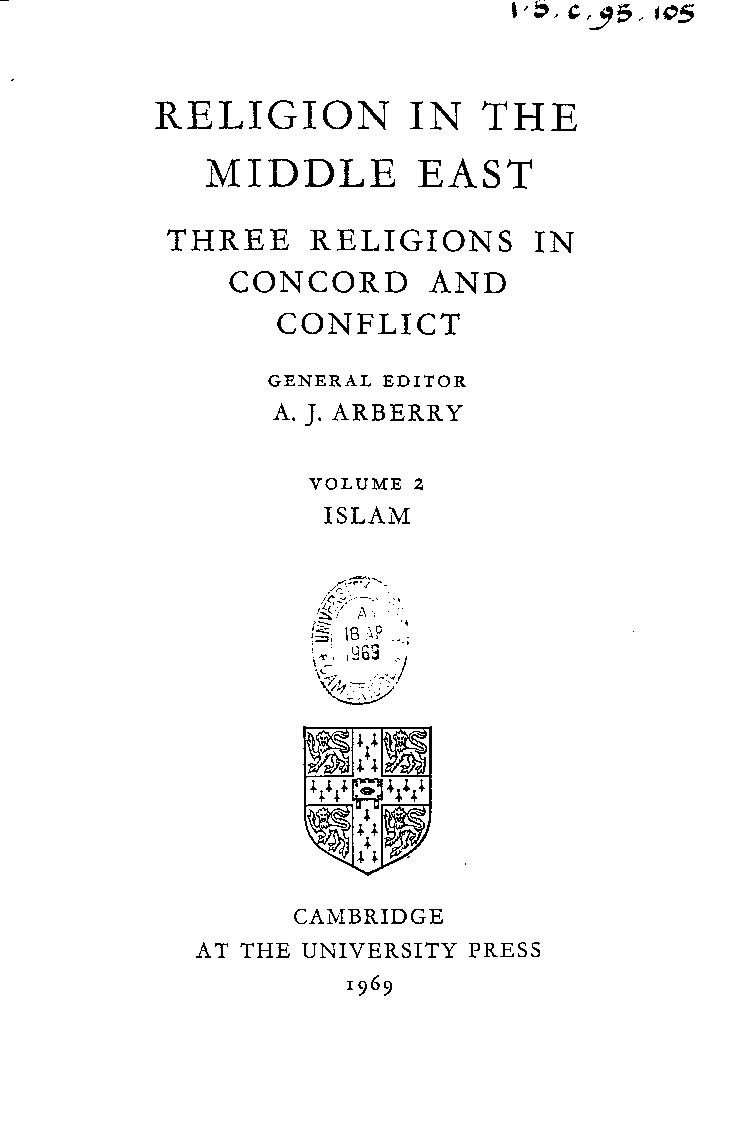
|
|
